Peter Ireland – 29 July, 2016
Projects such as this one of Batchen's build bridges with the more conventional art world's practitioners and audience. 'Emanations' is a rare example of a show which reveals something profound about an aspect of the medium's uniqueness as well as being within the comprehension of a seasoned art audience brought up on a diet of art where photography was only an optional hors d'oeuvre, if on the menu at all.
New Plymouth
Group show
Emanations: the art of the cameraless photograph
Curated by Geoffrey Batchen
29 April - 14 August 2016.
The incumbent professor of art history at Wellington’s Victoria University comes complete with a spade. Geoffrey Batchen has been digging around photographic history for a while now, and not just turning sods pre-1839, but continually shovelling soil outside the fenced boundaries of conventional art history. Internationally, his deeply thoughtful reflections on both the nature of so-called “vernacular” photography and his championship of it in exhibitions (1) point out tirelessly its probably central position in anything worthy of being called “photographic history”. The greasy echo chamber of “art photography” is not something his sharp attention could possibly inhabit for long.
Photographic histories - such as Beaumont Newhall’s influential and many-editioned one of 1937, Lucia Moholy’s in 1939, and Helmut and Alison Gernsheim’s in 1965 - were all framed by the Modernist agenda of progress, the pure and the new, so the phenomenon of cameraless photography was treated, if at all, only as an early, “primitive” stage of the medium’s technical development. Hand-coloured photography has suffered a similar fate - being regarded as somehow “impure” - and remains a largely ignored and certainly under-valued aspect of the medium’s history. Over the past three decades, however, as photography’s status has been lifted beyond imagining, and the medium itself has become more conscious of its own, very individual history, researchers and writers such as Batchen have been examining the contours of the medium’s borders and bringing their investigations to light in exhibitions such as the Govett-Brewster’s Emanations (2).
This exponential expansion of photography’s history not only deepens understanding of what we think of as “photography”, projects such as this one of Batchen’s also build bridges with the more conventional art world’s practitioners and audience. Emanations is a rare example of a show which reveals something profound about an aspect of the medium’s uniqueness as well as being within the comprehension of a seasoned art audience brought up on a diet of art where photography was only an optional hors d’oeuvre, if on the menu at all.
The phrase “major exhibition” has been tipped into the same credibility-depleted-by-overuse basket as “major motion picture” or art auctions claiming to be “important”. But in the case of Emanations it’s true. Major and important. Not just in New Zealand terms, but internationally. It says something about photographic nous, intelligence, energy and enterprise that such a show appears not in one of the four main centres but in a geographically provincial art museum.
For many people, on the face of it, the phrase “cameraless” photography could be something of an oxymoron. The conceptual basis of Emanations‘ contents is “photographic images using only a light-sensitive surface and a source of radiation.”
The blurb on the back of the accompanying publication (3) continues: “Looking back to the invention of photography in the early 19th century up through recent cameraless works by contemporary artists, Emanations tells the story of nearly 200 years of bold experimentation in photography. Whether placing objects on light-sensitive paper, drawing on blackened glass plates, or utilising radiography, photocopying, or digital scanning, ambitious artists have explored many techniques to make photographs without cameras. Exploiting the most elemental aspects of photography, they have produced powerful, even astonishing images that transform the medium’s traditional function as a mirror of reality. They allow that reality to speak for itself, as itself.”
Len Lye is the presiding genius of this exhibition. Although born here he committed the cardinal sin for a colonially-minded culture by leaving early and (almost) never coming back. So his singular achievements took a while to make their mark in his birthplace (4), but, perhaps co-incidentally, from the moment he died his stocks rose, and last year saw the opening of a purpose-built Centre in New Plymouth to house his works and papers, thus endowing the province with a real pulse and energy it has long claimed to have.
In 2011 Victoria University’s Adam Art Gallery mounted an exhibition Shadowgraphs: photographic portraits by Len Lye, the principal curator being Geoffrey Batchen, then almost 18 months into his professorial tenure. The show consisted of 26 of the 48 “cameraless” portraits Lye made in 1947 - a sort of annus mirabilis in his photographic production - but work never exhibited in his lifetime. This Adam selection from a significant body of Lye’s work seems to have sown the seed of the present Emanations exhibition. At its physical and conceptual centre at the Govett-Brewster is a room where all 48 of these “shadowgraphs” are hung, amplified by similarly-originated images by Lazlo Moholy-Nagy, Man Ray, Bela Kolarova, Jaromir Funke, Gyorgy Kepes, Max Dupain and several others. This room alone dovetails perfectly with the larger aims of the Len Lye Centre which is to foreground Lye’s work within a wider historical and international context, with the show itself taking this as its springboard to expand the timeframe of “cameraless” photography both backwards to the 1840s and forwards to now.
Now is where the exhibition starts, on the ground floor. (In a nice gesture to symmetry, the earliest work in the show from the mid-19th century is exhibited on the highest floor of the building.) The contrast couldn’t be more telling: the oldest works are tiny - especially Henry Fox Talbot’s - revealing a tentativeness and charm the size and confidence of the latest works abjure entirely. The experiments of Talbot and other pioneers aimed at visual resolution - pictures of nature - whereas what artists predominantly do now is suggest conceptual processes - the nature of nature. Starting an historical show with the most recent work is a very smart move, engaging contemporary viewers with the art of their time, then strategically teasing them back towards the beginnings.
However, before viewers have the chance to feel in any way instructed, on the way out - in the final gallery - they are again exposed to examples of recent and current productions. The new ramp from the Govett’s first landing down to the Len Lye Center is not an easy exhibition space to enliven (one’s attention focused on staying upright rather than looking at what’s on the walls), Emanations‘ designers have not only made virtue out of this but have capitalised on it as the signing-off point for the show, because within earshot are Lye’s stainless-steel fountains clanking away on the ground floor at the end of the ramp, a reminder of the exhibition’s true foundation.
It’s probably not essential to know which gallery is which, but on that score the exhibition’s signage is woeful, the confusion not helped by certain of the building’s levels being numbered not at all in sync with the galleries’ numbers (5). The curator may be Australian, but does indicating the lay-out have to be such a classic “buggers’ muddle”?
To avoid distraction from the images on the walls the designers have opted for labels mounted at right angles to them - which, nevertheless, cast notable shadows - so it’s necessary to stand quite close to read them (your head casting yet another shadow) which prevents anyone else being able to read them simultaneously. But they’re good labels, intelligently and concisely written, with useful information about each artist’s approach and technique, which, given their range and complexity, is not just useful but mindfully illuminating.
The acutely-named Emanations is fundamentally about this range and complexity, but, miraculously, via the means of simplicity: this is the exhibition’s almost incredible sleight-of-hand. In the age of the PBRF (6) there are many emanations of art (this is, at least, the makers’ claim) where often conceptually overly-complex projects - onanastically pleasured by their own complexity - consist of tracing a process through time and space, the results not so much illuminating as performing like kapok-stuffing for the gaining of qualifications. By contrast, the works in Emanations are the results of selfless explorations of the most basic nature of the medium. One could say of intention in relation to the PBRF phenomenon, it’s the medium, not the massage.
What Batchen has done with this show and accompanying publication is to foreground a formerly overlooked but perhaps most essential form of photographic expression, gathering together a rich stew of images which collectively are capable of moving the foundations of one’s assumptions about what photography can be about “free from the shackles of realist perspectival space, or the documentary imperative” (7).
Let the curator have the last word: “… as we’ve seen, a self-reflexive examination of the photograph as a representational form, a photography about photography, has always been an important aspect of this medium’s history. In addition, many artists now see modernism as an unfulfilled project and seek to reinvigorate its promise of a link between radical perspectives and social transformation. Their cameraless photographs therefore look back in order to signify a future that never was but might still be.“ (8)
Peter Ireland
(1) Batchen’s most comprehensive curatorial adventure in this direction here so far was his frankly stunning but seemingly under-appreciated Dark Sky show at Victoria University’s Adam Art Gallery from 1 May to 8 July, 2012.
(2) The exhibition’s installation actually spans the Govett-Brewster Art Gallery and the Len Lye Centre, but in this piece the former performs as shorthand for both.
(3) Emanations: the art of the cameraless photograph by Geoffrey Batchen, DelMonico Books/Prestel, Munich, London, New York, in association with the Govett-Brewster Art Gallery, 2016, 200 pp, $89.00. This book - which has two different covers: one with an image by Len Lye and the other by Anna Atkins - is not a catalogue of the New Plymouth exhibition, although about 44 of the book’s 144 principal plates are included in the show. Naturally, Batchen’s 43-page illustrated essay in the book covers the topic more thoroughly than even the exhibition’s accumulated signage and labels could. Indeed, the curator himself has called the book “the ideal show” (at July 8th’s photography seminar at the Govett-Brewster): owing to the fragility of many of the historic items, they proved impossible to borrow, which is why the exhibition consists very largely of images on paper and related supports. Given the international range of the book’s audience, this pairing of show and publication is a milestone in this country’s exhibition culture.
(4) Andrew Bogle’s 1980 show for the then Auckland City Art Gallery Len Lye: a personal mythology was the first significant showing of his work here, consisting of paintings, steel-motion sculptures and films, but including none of his photographs. Lye died in New York just a few weeks before the show opened.
(5) One of the exhibition’s attendants, when approached about where the signage for Gallery 5 might be, said “It’ll be on a wall somewhere with an arrow.”
(6) As a result of the post-1980s’ industrialisation of art education, the numbers of students aiming at qualifications rose exponentially and consequently fields of research narrowed accordingly, so that the very nature of research became debased, driven not by any objective need - say, to find a cure for the common cold, or establish a secure chronology for an artist’s work - but driven by a subjective need to gain a qualification. Hence the profileration of arcane and pointless projects which Justin Paton has dismissed as “homework”.
(7) Emanations, the book, p.38.
(8) Ibid p. 42.
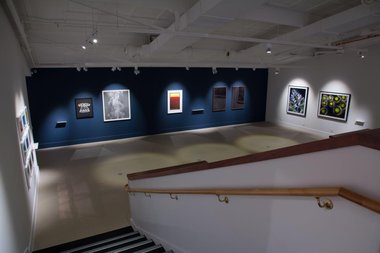

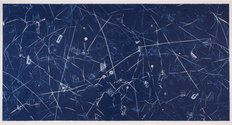

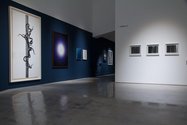
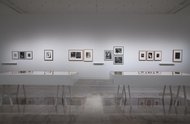
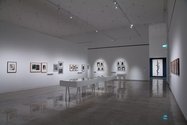
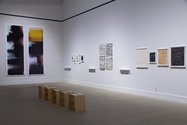

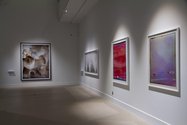
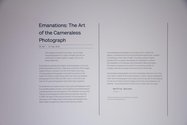
 Two Rooms presents a program of residencies and projects
Two Rooms presents a program of residencies and projects Advertising in this column
Advertising in this column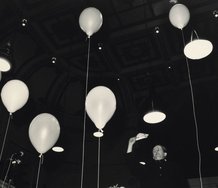

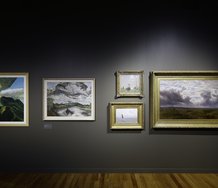
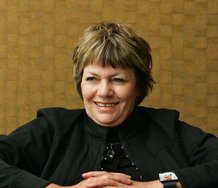
This Discussion has 0 comments.
Comment
Participate
Register to Participate.
Sign in
Sign in to an existing account.